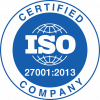Today’s companies are evolving and advancing rapidly. They grow and expand, and with this growth, the workload also increases in the different workplaces. Of course, this, in turn, increases the pressure on workers, generating high levels of demands that can cause a deterioration of their mental health.
It is unsurprising to find that levels of well-being at work decrease as the years go by and to observe how they evolve, causing “new” problems, such as work-related sisyphemia.
This new term is added to the list of mental health problems associated with work (such as burnout, workaholism, or work stress); and is used to describe the physical and mental exhaustion experienced by those who are perfectionists or obsessed with their work. Let’s take a look at what it is.

What is sisyphemia at work, and why does it affect us?
Sisyphemia at work, also called ” workers’ fatigue “, is a concept used to describe the high levels of physical and mental exhaustion workers suffer due to excessive workload and the pursuit of unattainable goals imposed by the company or themselves. In addition to these unrealistic goals, there is the frustration of being unable to achieve them (despite doing the best possible job), and the “punishment” of having to repeat the task every day.
Because of this, sisyphemia at work causes workers to have the irrational thought of “not being sufficiently productive”, despite the fact that they are objectively performing a high-performance activity. This feeling of inefficiency, as well as the frustration of “not achieving everything they should”, causes workers to be unable to disconnect from work, extending the working day to complete tasks, which increases fatigue and burnout.
Where does the term come from?
This term was used for the first time in 2022, in an article written by Araceli López-Guillén and José Manuel Vicente; and is inspired by the myth of Sisyphus, a king condemned in the underworld to carry out the same difficult task for all eternity.
This myth has been interpreted throughout history as a metaphor for routine and monotony. For, like Sisyphus, workers suffering from work sisyphemia are trapped in a seemingly endless and challenging work routine, where the constant quest for success becomes a daily condemnation.
Although these authors were the first to give the condition its name, the characteristics and discomfort that characterise it have been around for a long time. Sysiphemia at work is born in the contemporary work environment, where competitiveness and work overload are part of the daily routine.
Sisyphemia at work develops due to the imbalance between high work demands and the limited capacity of the worker to fulfill them in short periods of time. All this within a context of companies where monetary gains are prioritised over the mental well-being of human capital.
Therefore, the main cause of work sysiphemia is precisely this imbalance between high work demands and the workers’ capacity to respond, which creates a cycle of never-ending tasks and unattainable goals that, like Sisyphus’ doom, generate constant dissatisfaction and frustration.
How is it distinguished?
In order to recognise the phenomenon of sisyphemia at work correctly, it is necessary to be aware of its main characteristics. Among them, we can find:
- It tends to affect people who are perfectionists at work. Those with a high sense of responsibility, who are meticulous and always seek to fulfill all activities in an exceptional manner.
- It causes people to reduce their rest time and lengthen their working day in order to attend to their daily tasks. For example, even though they on holiday or it’s the weekend, they do not manage to switch off from work.
- It is often accompanied by poor time management, where disorganisation is the main cause of the imbalance between leisure time, personal relationships and work.
- Sisyphema at work is often accompanied by “productivity dysmorphia”, i.e. the belief that one is not being “productive enough”, even though one is. These obsessive thoughts tend to occur especially at times of rest.
- It is often observed in precarious work environments, where there is an imbalance between the high demand for work and the number of workers, or the difficult capacity to respond within the established schedules.

Main symptoms of sisyphemia at work
As with any other disorder, it is important to note that the symptoms of sisyphemia at work may vary from person to person, as well as their level of intensity. However, the most common symptoms are:
- High levels of self-demand: In previous articles, we talked about how perfectionism at work is detrimental to employees. And it is precisely this relentless pursuit of perfection through setting unrealistic standards for themselves and their performance at work that are virtually impossible to achieve. As a result, this can lead to high levels of chronic dissatisfaction and the mental exhaustion that characterises this phenomenon.
- Physical and mental exhaustion: Due to the extreme levels of pressure experienced because of the high standards imposed and the lack of job satisfaction, job sisyphemia can lead to physical and mental exhaustion, which can translate into illness or disease in either of these areas.
- Psychological disorders: If such levels of obsession with success, unbounded ambition, and extreme pressure are sustained over time, this can increase the likelihood of anxiety, depression, or sleep disorders in the employee. Exhaustion and mental fatigue can affect the cognitive resources of the person, decreasing their ability to pay attention, concentration, and memory processes, decreasing the capacity for rapid analysis.
- Social isolation: The imbalance between work and personal life may cause the person to abandon interpersonal relationships due to excessive time spent on work activities. This can be evidenced by changes in behaviour, such as a loss of interest in leisure activities, sports or personal relationships.
Strategies to tackle sisyphemia at work
In order to deal with sisyphemia at work, the first step must be to recognise and detect the symptoms in order to take action in time. In other words, it is essential to identify obsessive thoughts about work, the constant search for perfection, as well as to notice if there are any changes in the daily behaviour of employees.
Sisyphemia at work can become an overwhelming burden for employees, affecting not only their performance at work, but also their general health and well-being. For this reason, when it is apparent that a team member is experiencing this situation, managers or leaders can begin to implement the following strategies, which aim to ensure the well-being of employees and maintain a healthy working environment:
1. Encourage psychological safety at work:
To address sisyphemia at work, leaders must ensure that they foster spaces for open communication and respect. Crucial to this is the creation of an environment where employees feel comfortable sharing their concerns and boundaries, so they are not afraid to make mistakes for fear of being humiliated. Therefore, the establishment of effective communication channels for employees to express their needs and receive support in resolving work-related conflicts.
2. Assess and redefine workloads:
In many cases, sisyphemia at work results from a poor distribution of tasks, where too much responsibility is given to one person, or for short periods of time, which can cause people to become overwhelmed by the fear of missing deadlines. It is, therefore, vital to review and adjust work assignments to ensure a fair and realistic distribution. To this end, monitoring systems can be put in place to enable leaders to identify early signs of sisyphemy and take preventive action.

3. Offer flexible working hours:
Nowadays, we know that job satisfaction is not only obtained through the monetary aspect but having policies or benefits that allow employees to adapt work to their needs is part of the emotional salary, which plays an important role in the levels of mental well-being experienced by the workforce. For this reason, introducing policies that allow employees flexibility in terms of working hours and workplaces can help them to establish an appropriate work-life balance and ultimately tackle sisyphemia at work.
4. Provide resources for professional development:
In line with the previous point, offering development opportunities that allow employees to expand their skills and roles can help not only increase their capabilities but also encourage task rotation to avoid the monotony and burnout associated with sisyphemia at work. In addition, learning new skills and strategies in different domains can help strengthen a sense of empowerment at work.
5. Monitor employee mental health:
Leaders and managers have a crucial responsibility in the workplace to learn how to detect mental health problems in employees. This is because many people may find it difficult to seek help at work due to fear of stigma or rejection. For this reason, implementing psychoeducation programmes in the workplace can help foster an environment where employees feel comfortable talking about their mental health and therefore increase the likelihood of seeking help if they need it.
6. Implement mental well-being solutions:
In addition to offering psychoeducation services to increase conversation about the issue, offering therapy and emotional support services for employees facing any situation that puts their mental health at risk is key to tackling sisyphemia at work. Companies can serve as a bridge between employees and support services by contracting mental well-being solutions that provide staff with spaces where employees can ask for help when they need it.
7. Fostering a culture of recognition:
If we start from the premise that sisyphemia at work is understood as that constant feeling that efforts are never enough, a good way to combat it is through the continuous recognition of the small achievements or efforts of employees. For this, there are different strategies that can be implemented, such as the establishment of reward programmes that value the quality of the work and not just the quantity, as well as the application of verbal recognition that motivates the person on a daily basis.
8. Facilitate time management training:
Among the range of skills that are crucial to fulfilling job responsibilities, proper time management is one of the most important. Leaders and managers can provide training in this area, enabling employees to learn not only how to manage their time properly, but also how to prioritise tasks and work more efficiently. In many cases, these trainings can also include boundary-setting strategies to avoid the overload that is characteristic of sisyphemia at work.

9. Establish switch-off policies:
Along these lines, proper time management at work implies knowing when it is time to disconnect from work, either because the working day is over, or because of holidays or leave of any kind. For this reason, from leadership roles it is key to define policies that limit communication at work outside working hours, so as to allow workers to disconnect during rest periods and holidays, promoting the importance of work-life balance.
10. Create an inclusive working environment:
One of the most important issues in addressing sisyphemia at work is to ensure that all employees, regardless of their level in the hierarchy, feel that their needs are recognised and respected within the workplace. Key to this is promoting diversity and inclusion to ensure an equitable working environment, where everyone feels able to ask for help when they need it.
Focusing on mental well-being in companies
At ifeel, we know that supporting employees facing involves a holistic approach that encompasses organisational policies, work culture and mental well-being programmes.
This is why ifeel has designed a mental well-being solution for companies, designed by its team of expert psychologists to help companies put employee psychological health care at the heart of their corporate culture.
Thanks to this collaboration, the people at the forefront of human resources departments can receive personalised, data-driven advice on how to get the most out of their teams and take better care of the psychological well-being of the people in them. Try our programme now to see how it could help you.
We hope you found this post about sisyphemia at work interesting, and we encourage you to read our blog about the most important KPIs in Human Resources. If you would like more information about our mental well-being solution for companies, simply request it and we will contact your team as soon as possible.










